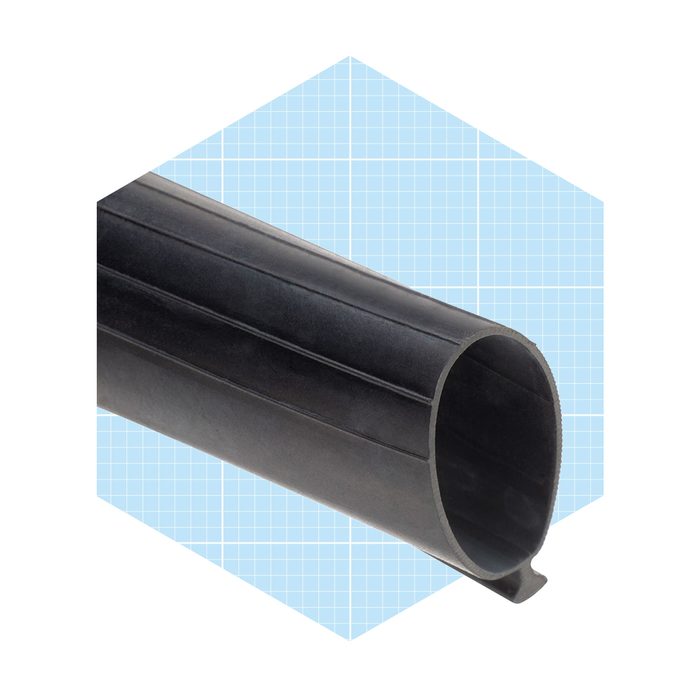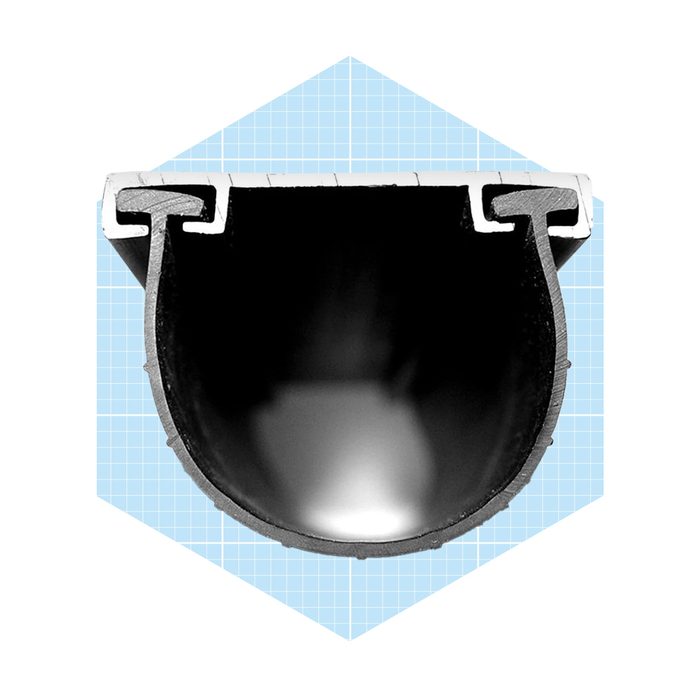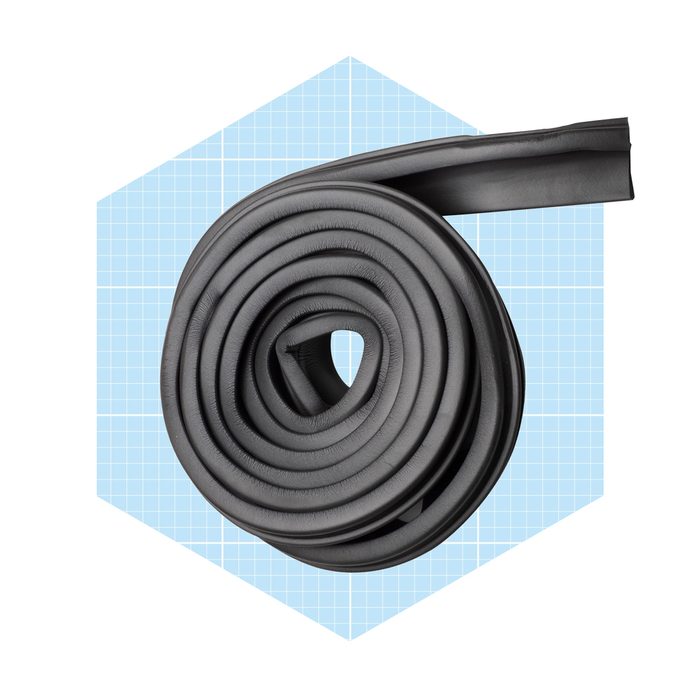 VIA MERCHANT
VIA MERCHANT
Like a sweep for your front door, a self-adhesive weatherstrip attaches to the bottom of the door on the outside. When the door closes, the rubber seal presses against the pavement and splays outward to make the seal.
This type of weatherstripping works best for wooden canopy and retractable doors that swing out and up when you open them. You can also use this on sectional and rolling doors.
There are easy to install. Close the door, position the strip, peel off the backing, stick it in place and drive screws to hold it on permanently.
Material: Propylene rubber | Size: 1 meter | Application: Self-adhesive | Best for: Wooden canopy and retractable doors
 VIA MERCHANT
VIA MERCHANT
The U-shaped beaded door seal is a flat piece of rubber or vinyl with beaded edges. It fits into tracks on a retainer installed on the bottom of the door. The strip is wider than the door’s thickness. Fitting it into the retainer tracks creates a U shape that compresses against the pavement when the door is closed.
This type of garage door bottom seal works well on uneven pavement, because the material is flexible enough to fill depressions. It is available in widths from three to six inches, and you can compensate for deep depressions by choosing a wider strip.
It requires a matching retainer that’s standard on metal doors from some manufacturers, but may have to be installed on other doors.
Material: Synthetic EPDM rubber | Size: Can be ordered by custom foot and inch | Application: Secures to the bottom of the door | Best for: Uneven pavement
A bulb-shaped bottom seal, aka a tube seal, is a length of rubber or rubberized vinyl formed into a closed loop with a circular or oval cross-section. A channel on the top of the loop fits into a corresponding track in a retainer affixed to the bottom of the door.
This type of seal flattens against the pavement when the garage door is closed, effectively sealing out the elements. It’s similar to the action of a beaded seal. But because it only requires a single track, it’s best for doors that already have that kind of retainer. For two-track retainers, you can find a bulb-shaped seal to fit that.
Material: Rubber | Size: Can choose from 10-, 16.4-, 18- or 20-foot options | Application: Fits directly to the door | Best for: Doors that have a single-track retainer
Almost every outlet that sells garage door seals lists T-style as an option. This refers to the shape of the channel that fits into the track on the retainer. The T-style cross-section makes the seal watertight and prevents it from moving laterally and interfering with the operation of the door.
Both bulb-shaped and U-shaped beaded seals come with rounded and T-shaped channels. If you have an existing retainer, be sure to check the shape of the tracks before you buy the door bottom sealer, because rounded and T-style tracks aren’t interchangeable.
Material: Aluminum and vinyl | Size: 9 feet | Application: Fastens to the bottom of the door using included screws | Best for: Single steel or wood roll-up doors
A J-style bottom seal fits into a single-track retainer. It consists of a flap that bends to form a shape like the letter “J” when the door is closed. Some versions have two flaps; one bends toward the outside of the door, and one toward the inside.
This type provides good protection from rain and wind. Because it often comes with its own retainer, it’s a good option for a wooden garage door without one. The retainer width must match the door thickness. You install it by fitting it onto the bottom of the door, then nailing or screwing it to the outside.
Material: Rubber | Size: Sold by the foot or in 200-foot reels | Application: Fits to the bottom of the doors with screws | Best for: Wooden garage doors
FAQ
Can you replace the seal on the bottom of a garage door?
Yes, you definitely can. Replacing the seal on your garage door is a pretty simple process, but the specific steps will depend on the option you purchase. Generally, you’ll want to remove the old seal, clean the track and then install the new one, whether that means nailing it to the outside or using the existing adhesive.
How do I know which garage door seal to buy?
There are a few factors to consider, including the shape and size of your garage door. You should measure the length and width of the door, along with the size of the gap between the floor and your garage door. Make sure you choose a material that can address your problem, too—some garage door seals are better fitted for insulation, while other materials may be more ideal for keeping pesky critters out.
How much does it cost to replace a bottom garage door seal?
If you already have the tools needed for installation, the cost will primarily depend on which seal you buy. We included a wide variety of options; some start at around $3.36 per foot, while others are priced at $24 for 9 feet.
What is the difference between vinyl and rubber garage door bottom seal?
Vinyl garage seals can be slightly more affordable and are more durable. Rubber is a more flexible material that can provide a tighter seal. However, if you live in a place where colder climates make an appearance, rubber is better since it can easily conform to the bottom of the door, even as the temperature falls. Vinyl typically becomes stiffer in cold weather.


























